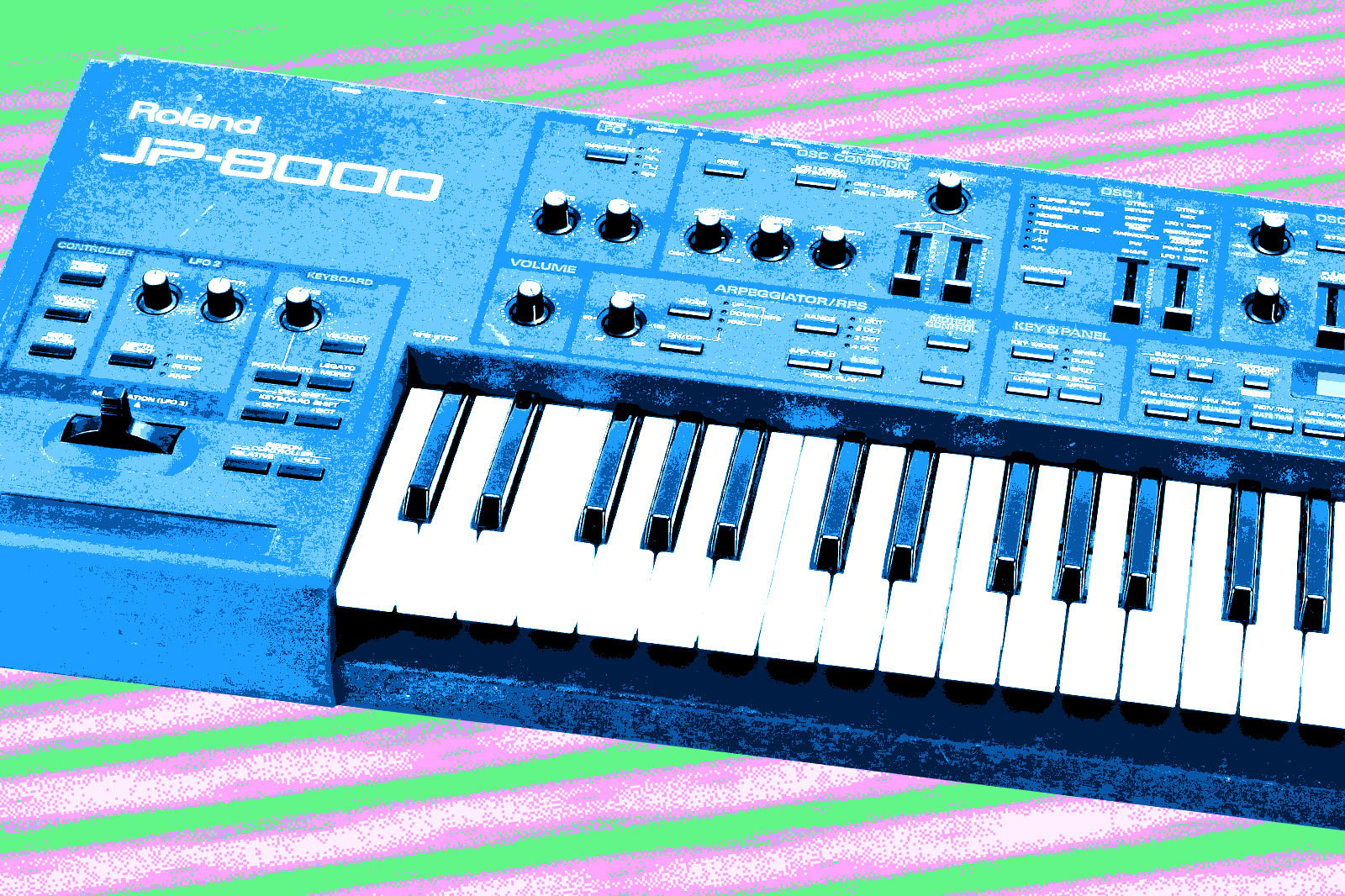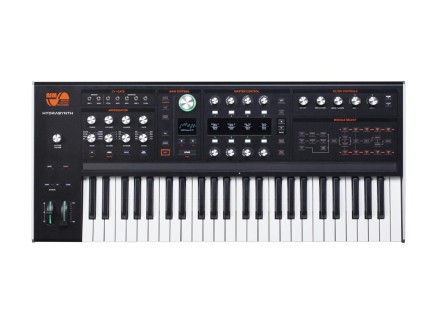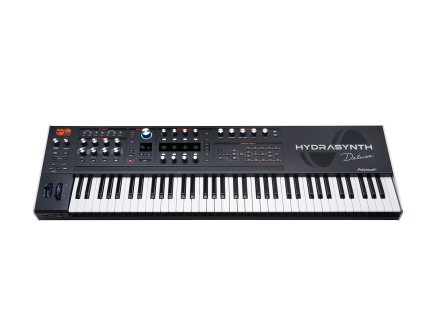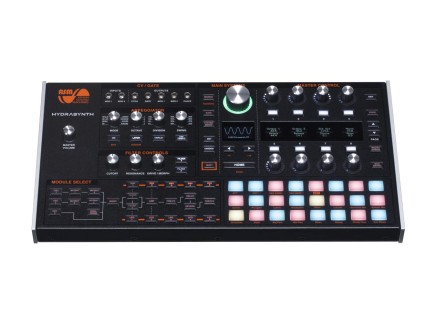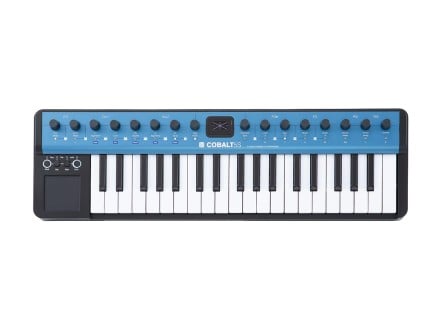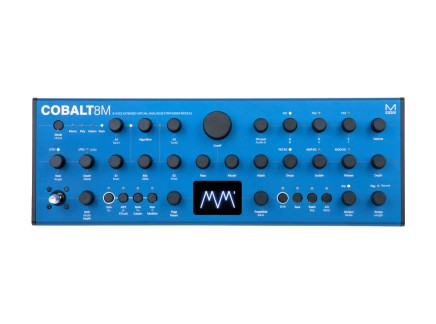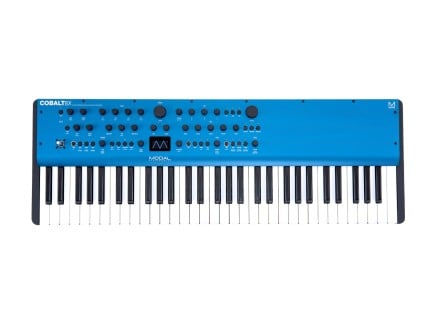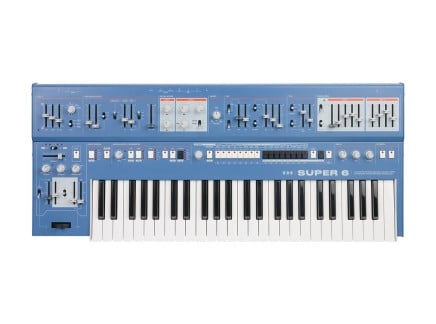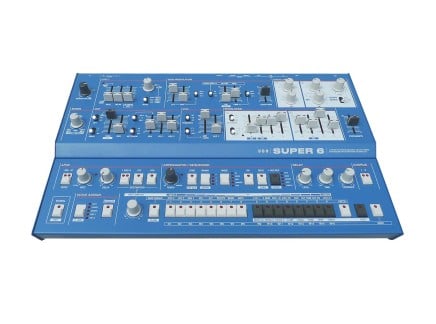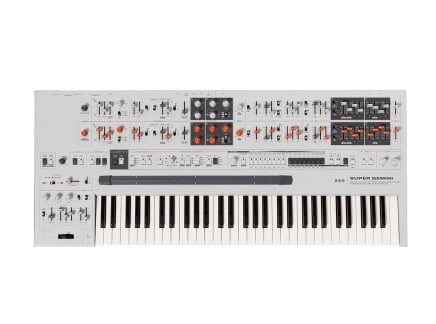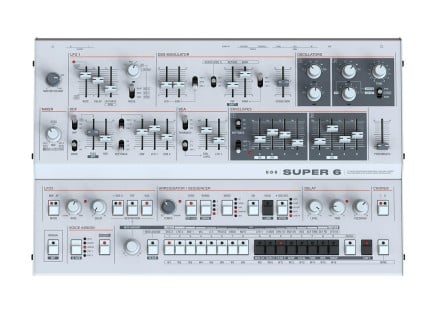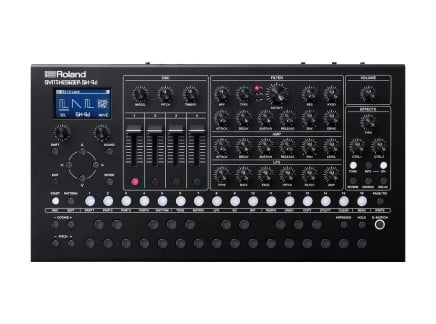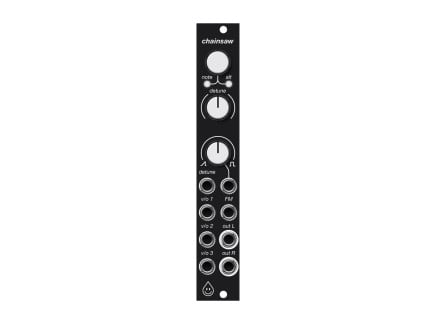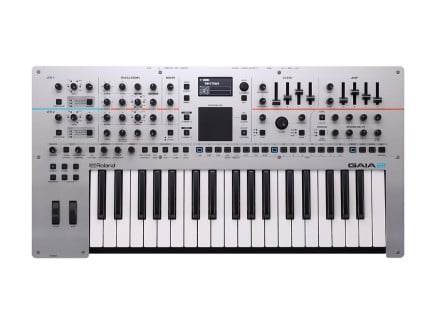The super saw has been so unanimously celebrated by the electronic music community that many refer to it simply as the “trance sound.” From the late 1990s and beyond, its powerful presence turned melodies into anthems and powered the dance floors of countless warehouses, festival grounds, and everywhere else touched by the electronic music world.
Today we dive into the story and mechanics of the lush, organic, fuzzy, and above all else, BIG super saw. And, of course, we’re gonna show you how to make it, as this is one patch you’re gonna want for your synthesis cookbook.
What is a Super Saw?
The super saw is a huge sound. It’s been used countless times in powerful EDM leads and riffs due to its sheer density. It breaks through the mix, knocking aside drums, pads, and even bass with a commanding fullness that’s perfectly suited for the kind of strong hooky melodies that drive a song.
As we’ll explore, though, its capabilities extend anywhere you want to take it: chords, bass, and pads are all within the realm of a super saw-based sound's capabilities. That’s because even though the super saw is a big, full sound, it’s also capable of a certain fuzzy smoothness you won’t find anywhere else.
The classic super saw sound combines multiple (typically seven or more) slightly detuned saw waves. This is why the sound is so big: saw waves are the most harmonically rich standard synthesizer waveform, and with the super saw, we stack a bunch of them. But before you rush off and set all of your saw oscillator-based voices to unison mode, know that there’s a little more to creating this iconic sound. Let’s explore the super saw’s inner workings with a quick recap of its history.
The Trance Machine: Roland JP-8000
[Above: an exceptional JP-8000 demo by early synth YouTube legend Jexus, aka WC Olo Garb.]
The super saw came into being via Roland’s 1997 virtual analog synthesizer JP-8000. Virtual analogs (VAs) were popping up everywhere at the time, and it was even considered that they might eventually replace analog machines altogether. As with most VAs, the JP-8000 didn’t bring the same warmth and character we adore in classic analog instruments, but it did pack something incredibly unique: the super saw oscillator.
Seven Saws
Described by Roland as the sound of seven simultaneous saw waveforms, the super saw oscillator creates a rich, fuzzy sound that oozes harmonics and sonic artifacts in all the right places. The sound is thick and intense while preserving enough movement and variation to feel organic, but not so much as to be chaotic or unpleasant.
[Above: Roland's JP-8000 virtual analog synthesizer. Images via Perfect Circuit's archives.]
Wait a tick? My grandma’s Prophet can stack saw waves, is that all this super saw business is about? Well, no—as evidenced by the sound of the JP-8000, there’s more to the super saw brew.
Detune & Mix
Seven unison voices of saw waves, will, at first, just sound like a louder saw wave. The JP-8000 employed two oscillator parameter control faders, labeled Detune and Mix.
The JP-8000 detune fader very slightly detuned the super saw’s six extra saw waves while maintaining accurate tuning of the primary saw. Pushing that fader up is when your first hear the iconic super saw sound come out. The voices gradually drift apart and interact by filling the spaces in between with a thick fuzz that almost seems to modulate in a very pleasing way.

[Above: super saw waveshape controls as explained in the Roland JP-8000 user manual.]
Next comes the mix knob, which changes the volume of the detuned voices relative to the fundamental saw voice. Using these two parameters allows the player to adjust the super saw to taste, ranging from sizzling spaced-out waviness to a buzzing swarm of in-your-face power.
This is similar to the types of effects you can get on most analog polysynths simply by setting it to operate in unison mode with a saw-based patch, and slightly detuning the voices from one another (a pretty common trick). There are two key differences, though: when you use a polysynth in unison mode for this trick, you won't have control over the individual voice levels…at least not in the same way that you do with the JP-8000's "Mix" control. Furthermore, if you do this trick by using a polysynth in unison mode, the synth will suddenly behave monophonically, only able to play a single note at once. On the JP-8000 (or its rackmount version, the JP-8080), the Super Saw is effectively a selectable waveshape: so, you can use super saws without impacting the synthesizer's overall polyphony.
How to Make a Super Saw
Now that we’ve gone over what a super saw is, let’s talk about the basics of making your own. You can make a super saw on nearly any synth that can produce enough detuned unison saw waves, has a highpass filter, and free-running oscillators.
All the Saw Waves
The key ingredient to the super saw is multiple slightly detuned saw waves. The original super saw stacked seven saws waves, but these days it’s common to do this multiple times for an even bigger sound.
Start with a saw oscillator and start packing unison voices. Keep an eye on your voice count for polyphonic patches, as you want at least seven saw voices stacked. So, even for three-note triad chords, you’re going to need around 21 voices. If you’re working with eight or so voices, it may be best to stick to monophonic super saw patches.
Of course, not every synth out there allows you to define the number of voices used for unison mode, and not every synth out there will allow you to create multiple "sets" of unison voices to play polyphonically. In fact, this is a fairly uncommon features. So later, we’ll check out several modern synths that have special methods for creating super saws while preserving voice count.

[Above: spectrogram of an evolving super saw waveform.]
Easy on the Detune
A big part of the thick super saw sound is the density that comes from maintaining a slight detuning of the unison saw waves. The more you detune your saws, the further you’re spreading those voices; after a certain point, you start losing power.
The original super saws on the JP-8000 stuck to a pretty narrow detune unless you pushed the detune fader near its max. If your goal is punchy, strong leads, detune just to the point where you can start the hear the separate saw waves and then adjust to taste. When you start to lose power and density, back off a bit to maintain a punchy sound.
Free-Running Oscillators
If you want the charming sonic fluctuations with each keypress that gives the JP-8000 super saws their organic feel, set your voices to a free-running mode if possible. The feature may have different names, but what it does is prevent the oscillators from resetting their phase with each key press, giving each note a little bit of organic variation. You can often find this feature in global settings, or wherever you control your voice behavior and unison modes.
Filtering
The JP-8000 very likely employed an internal behind-the-scenes filtering to its super saw oscillator to remove muddiness and unwanted artifacts from aliasing. Aliasing may not be as big of a problem in modern digital synths, but the JP-8000’s internal highpass is a part of the super saw’s character.
Highpass your super saws to get a focused sound that really cuts through the mix. Ideally, the high-pass should come before any additional filtering to be as faithful as possible to our dear JP-8000. For the best results keep the cutoff right on top of the fundamental frequency and use a hefty amount of key tracking.
Effects
Effects like chorus, flangers, and reverb usually sound very nice when paired with the super saw. Also, if your synth has a stereo width setting for your unison voices, adding a bit of width can make your super saws sound even bigger.
How to Be Super: Super Saws and Other Super Shapes on Modern Gear
The above is a basic recipe for a super saw patch, but the JP-8000 used a super saw oscillator that freed up the synths filter and other elements for further tonal tweaking. The demand for the super saw is not lost to modern synthesizer manufacturers, and many have implemented ways the create super saws at the oscillator level without using up all your unison voices. Here are some of today’s best synths for super saws and other super shape waveforms.
ASM Hydrasynth
The ASM Hydrasynth is a fantastic super saw machine, with the flexibility and feature set to get quite close to emulating the full JP-8000 signal path.
One of the Hydrasynth's unique features is its four "Mutants"—processors that sit between the first two oscillators and the pre-filter mixer in the signal path. These can be used for a number of modulation and waveshaping duties, from linear FM and sync to much more esoteric effects. For our purposes today, the most interesting is the Wave Stack Mutant, internally referred to as WavStack.
The WavStack mutant allows you to create five detuned copies of any waveform using only one of the eight voices. This is a huge advantage, especially for polyphonic super saws. You can also double up and use the WavStack mutant on two oscillators to create massive super saw leads—or, you could use two WavStacks in series for seriously dense sounds.
The Hydrasynth’s WavStack mutant has Depth and DRY/Wet parameters that you can use to adjust the detune and mix amounts, much like the JP-8000. And with the Hyrdra’s dual filters, capable of series mode, you can get that tight super saw density by setting a high-pass filter first and still have another filter available for further shaping.
Additionally, the Hydrasynth has a Random Phase setting that will give your super saws those organic fluctuations with each key press, and a stereo width setting that allows you to choose how spread out your super saw sounds.
You can add some of the Hydrasynth’s onboard effects for further depth and movement. We recommend adding at least some chorus and then experimenting with the flanger and distortion.
Last but not least, this method is applicable to any of the massive number of waveforms available on the Hydrasynth, allowing for the creation of super squares, super triangles, or super versions of any of the crazy shapes available through the Hydrasynth’s wavetable-like features.
Modal Electronics Cobalt8
The Cobalt8 makes quick work of super saws and other super shapes, due to its handy and powerful "Spread" oscillator algorithms.
The Cobalt8’s Spread Saw algorithm is perfect for super saws, complete with detune and blend controls. Like the Hydrasynth, it provides a way of multiplying your saw waves without sacrificing voice count. For a massive super saw sound, you can take it a step further by selecting the Cobalt8’s unison-8 mode for 64 simultaneous saw waves.
You can use a high-pass filter for more classic-sounding super saws and add effects to taste.
The Cobalt8 has the advantage of additional super shape algorithms, allowing you to create super squares and super triangles. You can even use different super shapes on each oscillator and blend between the two for a truly unique sound.
UDO Super 6
The UDO Super 6 is a 12-voice hybrid synth capable of beautiful super saws and other super shape patches utilizing its unique DDS oscillators.
The Super 6’s first DDS oscillator has a Super DDS switch that activates six free-running stereo sister oscillators for a total of seven saw waves, just like the JP-8000. It uses two modes, half and full, to set the relative mix level of the fundamental and unison voices. You can get punchy by using half Super DDS or switch to full Super DDS mode if you’re craving more width. The DDS oscillator also has a detune slider, allowing you to adjust your ideal balance of space and power.
What you do with the Super 6’s beautiful analog filter is up to you. For classic super saws, you could start with a high-pass filter and place the cutoff near the fundamental frequency to keep from losing too much oomph.
As to be expected from a synth of this caliber, you can use the same method to create other super shapes by setting the Super DDS oscillator to a different starting shape. Lastly, you’d be crazy not to at least try out the Super6’s Juno-style choruses on your super shape patches. It sounds amazing.
Roland SH-4d
The extremely capable Roland SH-4d has arguably the simplest and truest method for creating outstanding super saws. Using the SH-4d’s self-titled oscillator model, you simply choose the Super Saw waveform. That’s right, a bonafide Roland super saw waveform complete with detune control, almost certainly modeled off the original. And the sound of it definitely hits the mark without employing any extra filtering, freeing the filter up for other uses.
The SH-4d’s self-titled oscillator model includes up to four oscillators, all of which can be set to Super Saw for a huge sound. You could also set one of the oscillators to a simple saw wave, and use that to reinforce your fundamental frequency and make up for the lack of a super saw mix knob.
Acid Rain Technology Chainsaw
The Chainsaw is a polyphonic three-voice digital oscillator designed for eurorack. The module was inspired by the super saw, with seven waves per voice for a total of 21 swarming saws. The voices are activated by inserting a patch cable into a voice’s input. You get a detune knob and a frequency knob that can be switched to a fine tune with a quick press.
The Chainsaw can do super saws, super squares, and, literally, everything in between—a handy morph knob shifts the waves from saw to square. If your looking for super saw sounds for your rack, you’d be hard-pressed to find a better fit.
Keep It Super
This iconic sound and synthesis concept has developed a life of its own as it continues to inspire new synthesis techniques and sounds. As we’ve explored, there are dozens of ways to make a super saw patch, but always go with what sounds good to you. There’s no wrong way to super saw.

